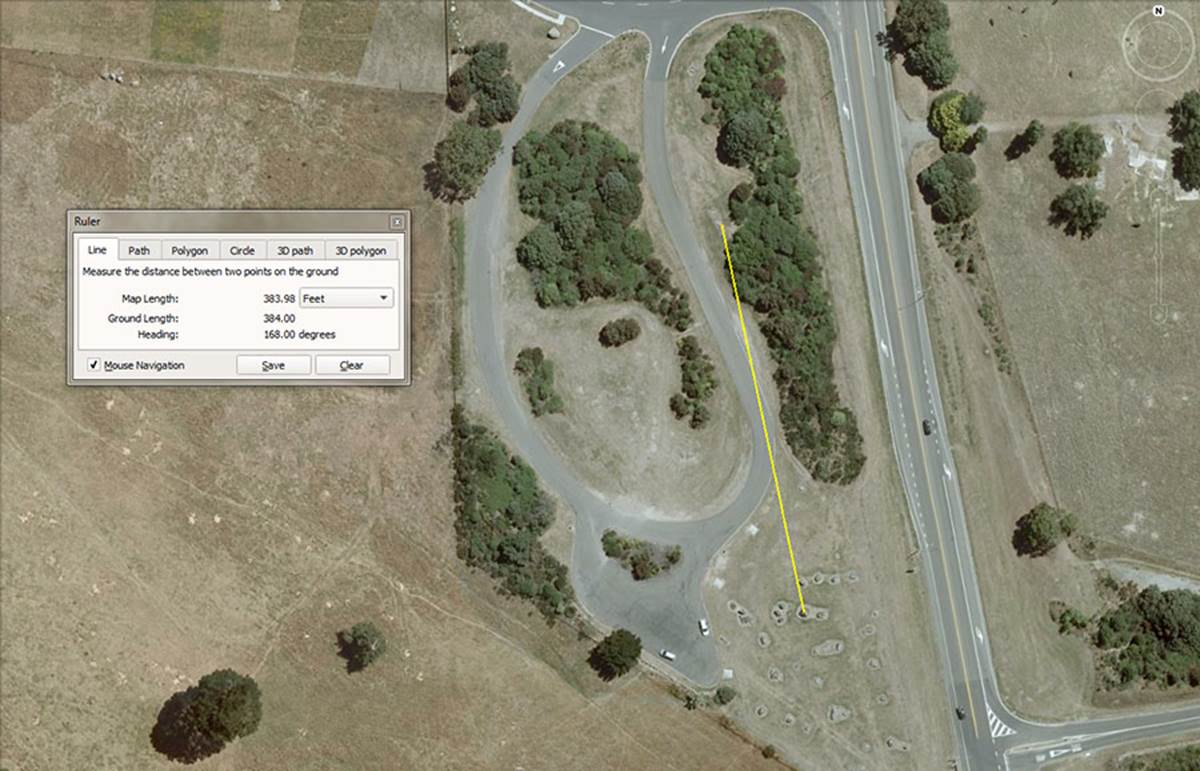
SECTION 2.
INTERMEDIATE SITES – slightly more distant and requiring more skill for the initiate to decipher the codes of position.
INTERMEDIATE POSITION 1.
In the bush covered section immediately north of the hubstone are many surviving outer marker obelisk and boulder positions obscured from view under the canopy of trees. To a lesser extent this holds true for the bush-clad raised-mound section to the immediate NNW of the hubstone.

The distance to this outer-marker is 384-feet at a return angle back to the hubstone of 168-feet. The tree-clad regions have impressive obelisks enshrouded under their canopies and careful GPS readings will be needed to log those positions.

The large boulder in the centre background sits 384-feet from the hubstone at a return angle of 168-degrees. Another languishes half-exposed on the fringes of the tree-line. The foreground shark’s-fin shaped obelisk sits 396-feet from the hubstone on an angle of 166.666-degrees return to the hubstone.
The 1.66666 (continuous) value was very important to ancient calculations and, as stated, in any 3-4-5 triangle one side will be 1.66666 less in length to the hypotenuse, whereas the other side will be 1.25 less in length.
INTERMEDIATE POSITION 2.
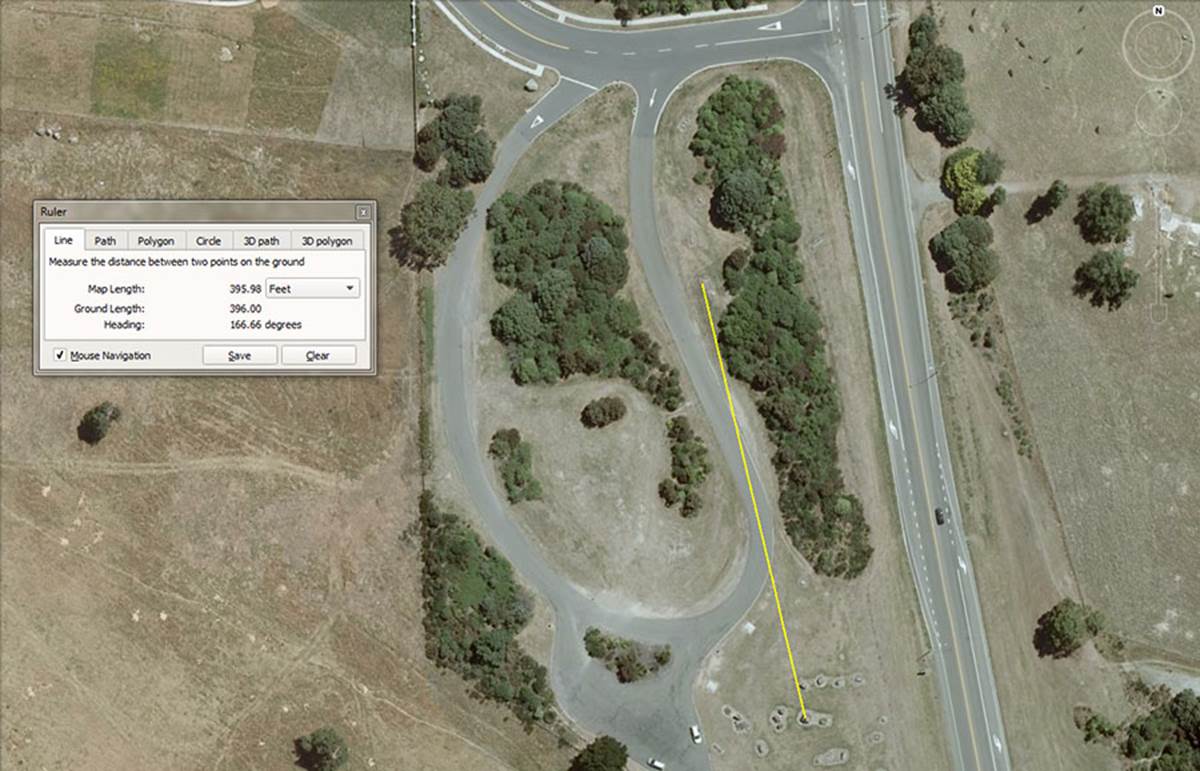
INTERMEDIATE POSITION 3.

Again, intermediate position 3 uses the return angle of 166.666 as the angle code. It sits 432-feet out from the hubstone.
A mathematical progression based upon 432 goes:
432, 864, 1296, 1728, 2160, 2592, 3024, 3456, 3888, 4320, 4752, 5184, ... 6048, ... 6912, etc., and identifies values that relate to navigation and the equatorial size of the Earth, the Precession of the Equinoxes, etc. The Great Pyramid is 432 Hebrew/Celtic cubits of 21-inches; the Sarsen Circle outer rim at Stonehenge had a coded circumference of 345.6-feet and 345.6-miles would be 1/72nd of the 24883.2-mile equatorial circumference.
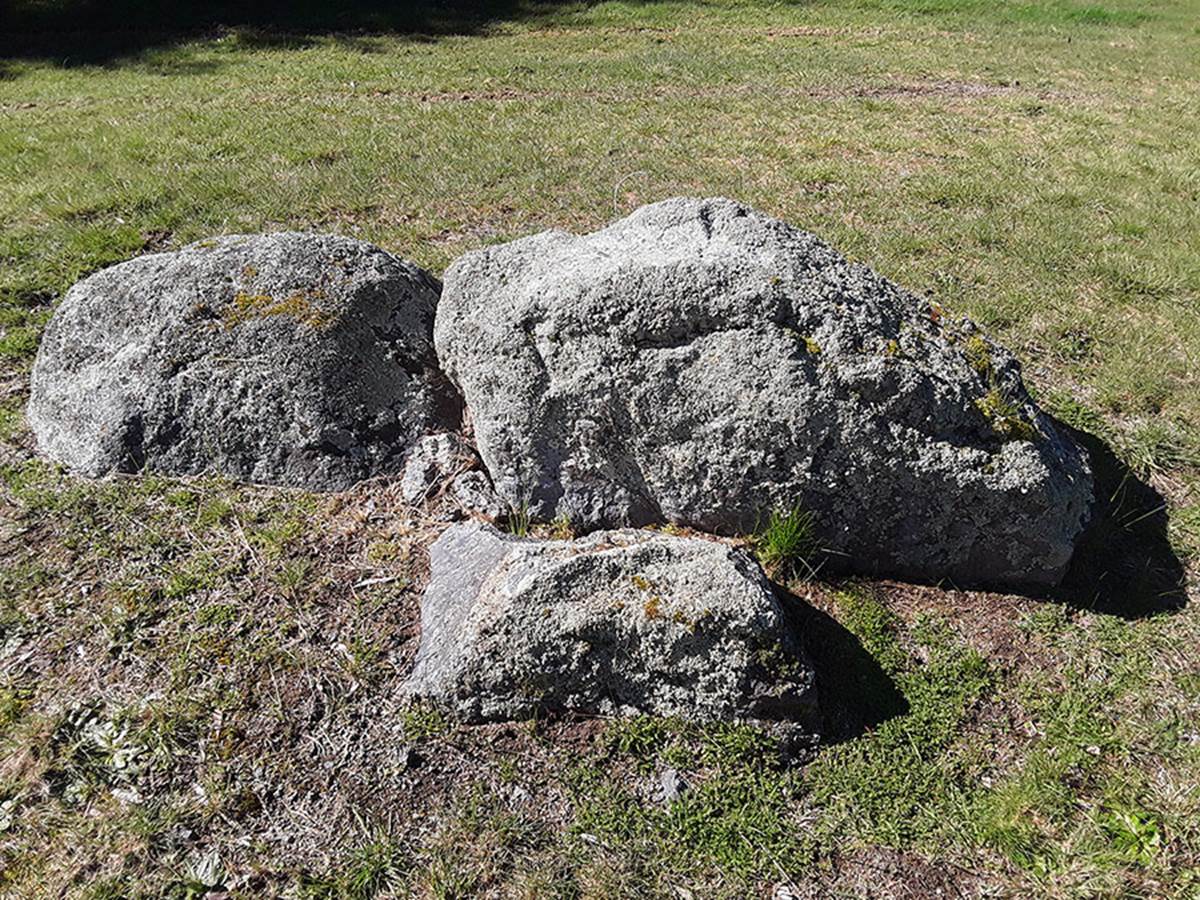
INTERMEDIATE POSITION 4.
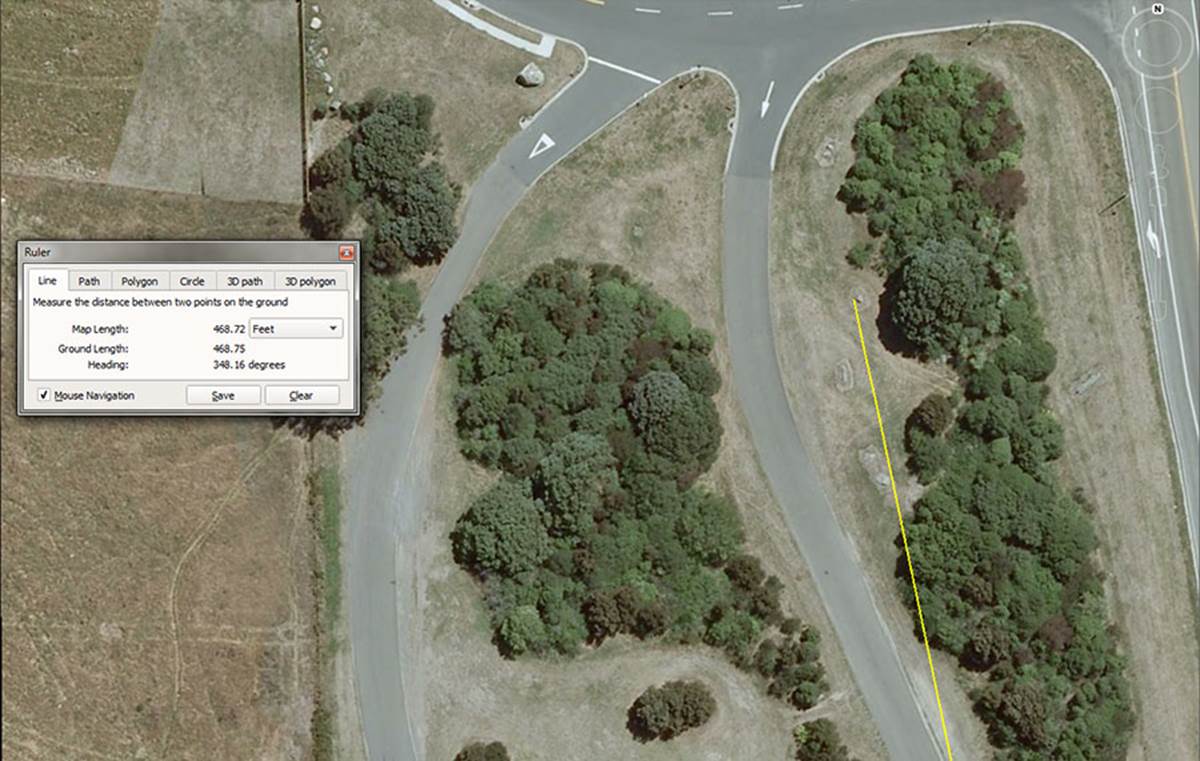
This is a highly important position, as it designates an angle and alignment for a significant geometric design, once etched or otherwise marked into the terrain. The distance to the pyramidal marker stone is 468.75-feet on an angle of 348.16-degrees or 168.16-degrees return to the hubstone. The immensely important merits of this line will be explained as we proceed.
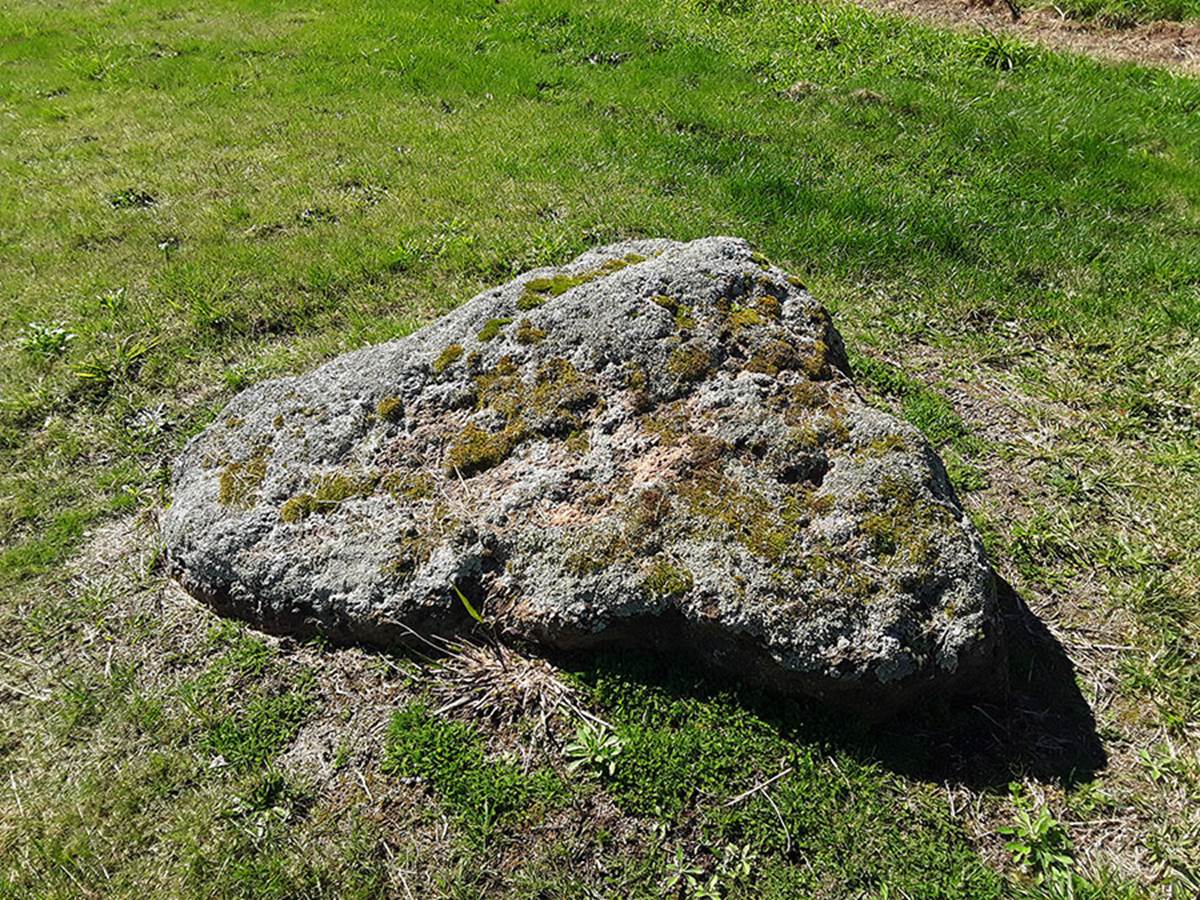
The very pyramidal outer-marker sitting 468.75-feet from the hubstone on a special degree angle (348.16) that related to one diagonal side angle of the Great Pyramid, offset by 50-degrees anti-clockwise.
INTERMEDIATE POSITION 5.

At intermediate position 5 the same 348.16-degree angle is maintained from the hubstone, but this time the distance is coded to be 537.6-feet.
Under the 24883.2-miles of 5250-feet each the equatorial circumference was 130636800-feet of which 53760 would be 1/2430th part.
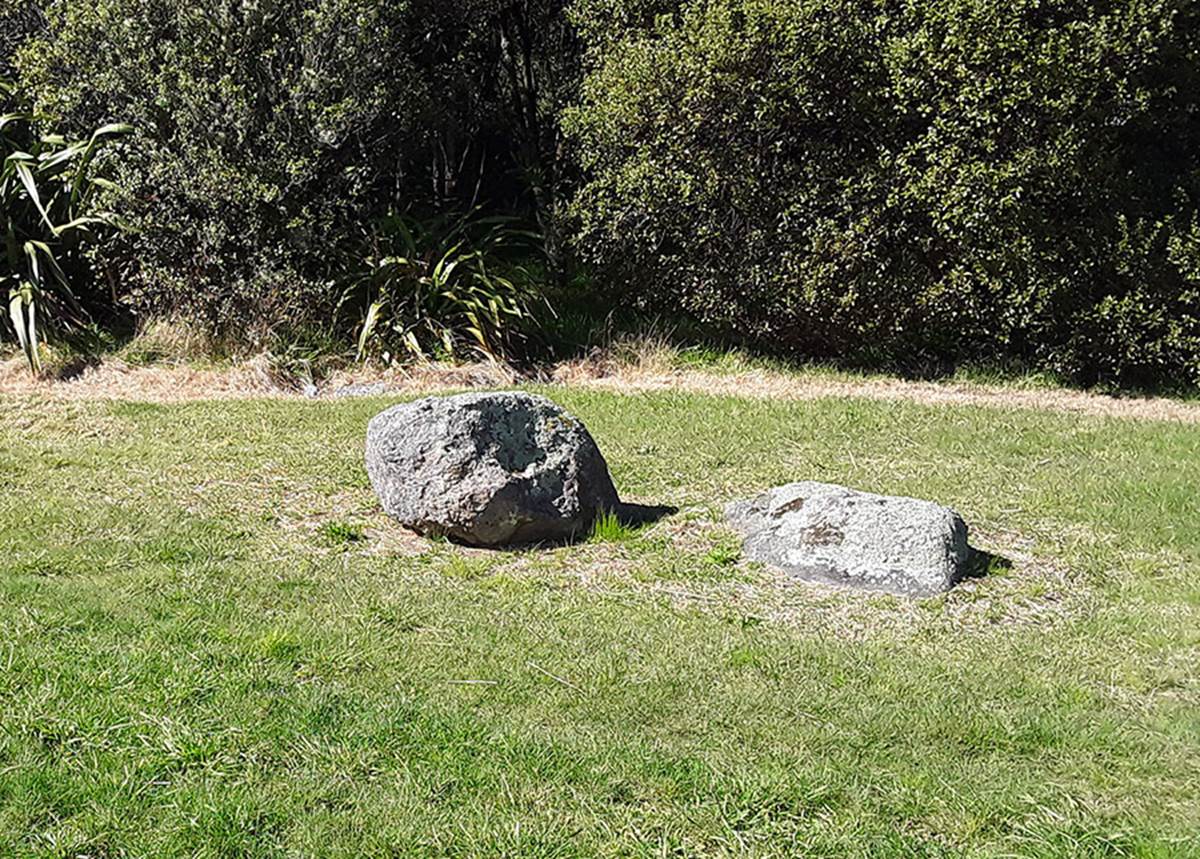
The smaller boulder in the set maintains the angle of 348.16 and a length of 537.6-feet. The larger boulder inset slightly nearer to the bush-line sits at a return angle to the hubstone of 168.75-degrees and 540-feet from the hubstone.
The 168.75 code is primarily lunar and the sum of 16.875-days (405-hours) would equate to 1/21st of a lunar year of 354.375-days.
A mathematical progression based upon 540 goes:
540, 1080, 1620, 2160, 2700, 3240, 3780, 4320, 4860, 5400, 5940, 6480, ... 7560, ... 25920, etc.
Values within this string relate to navigation, rounded PHI, the Precession of the Equinoxes, compass bearings, the Scottish mile, etc.
OBSCURED POSITIONS UNDER THE TREES.
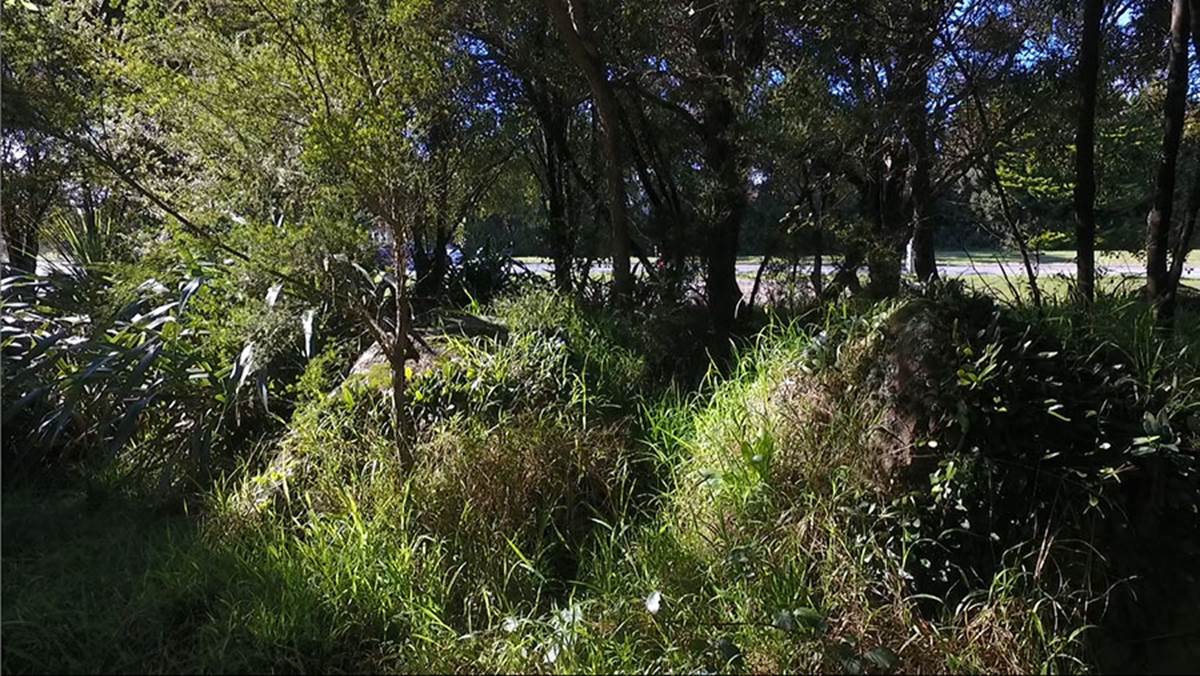
Under the canopy of trees are at least a dozen or more obelisk outer-markers that have yet to be assessed for codes of distance and angle from the hubstone. This dual set of large boulders are almost completely covered in foliage. We will return at some stage with sophisticated GPS equipment to log these positions down to almost pin-point accuracy.